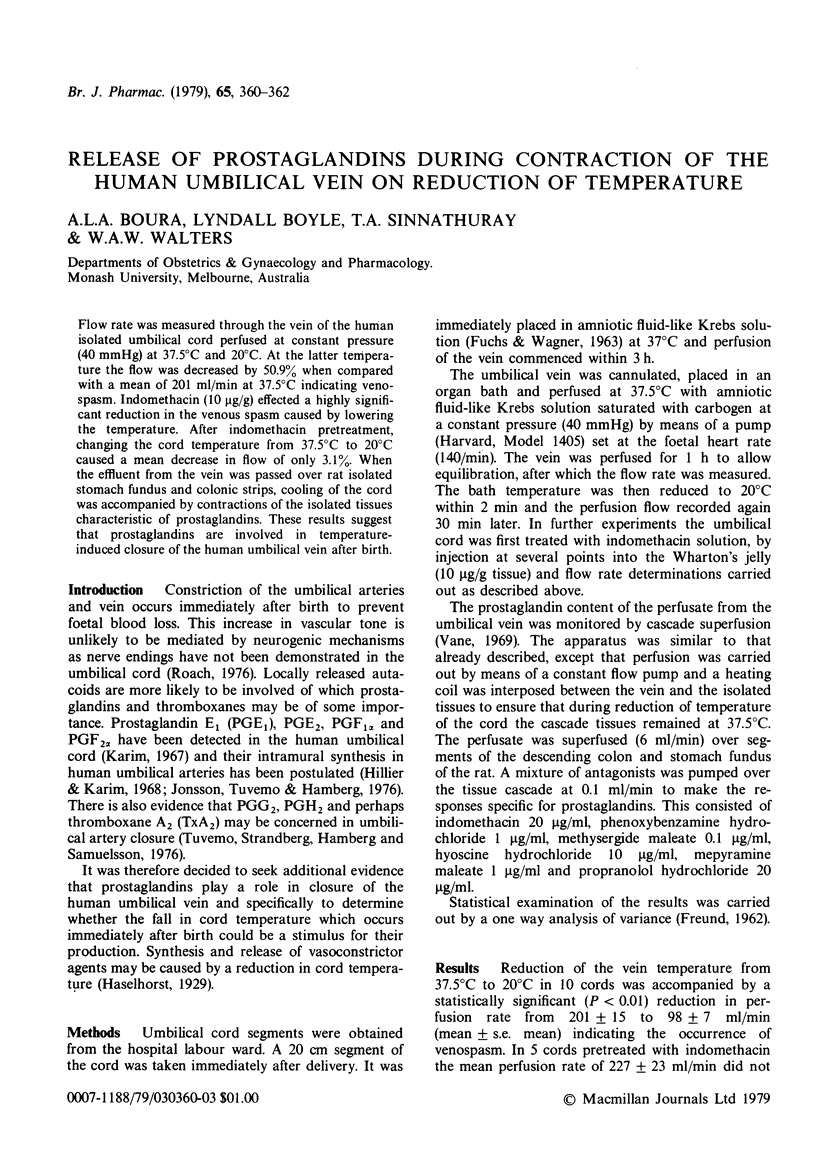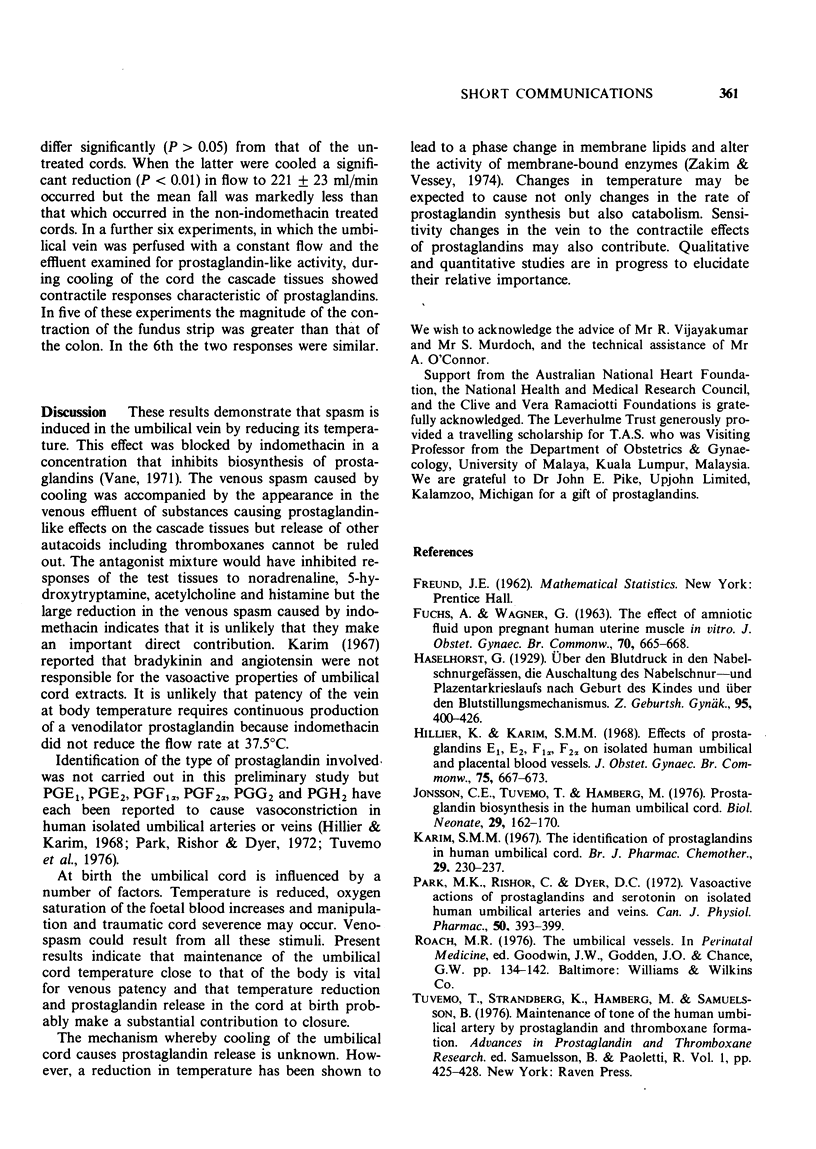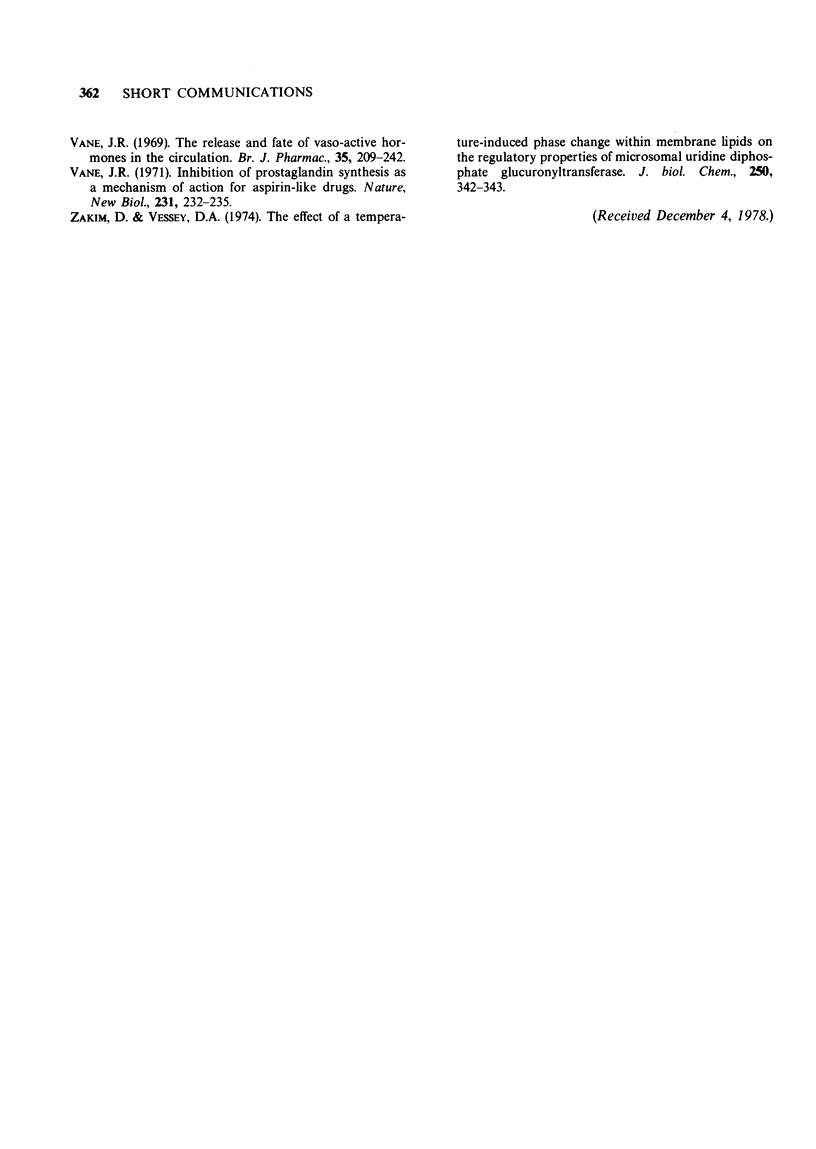Abstract
Flow rate was measured through the vein of the human isolated umbilical cord perfused at constant pressure (40 mmHg) at 37.5 degrees C and 20 degrees C. At the latter temperature the flow was decreased by 50.9% when compared with a mean of 201 ml/min at 37.5 degrees C indicating venospasm. Indomethacin (10 microgram/g) effected a highly significant reduction in the venous spasm caused by lowering the temperature. After indomethacin pretreatment, changing the cord temperature from 37.5 degrees C to 20 degrees C caused a mean decrease in flow of only 3.1%. When the effluent from the vein was passed over rat isolated stomach fundus and colonic strips, cooling of the cord was accompanied by contractions of the isolated tissues characteristic of prostaglandins. These results suggest that prostaglandins are involved in temperature-induced closure of the human umbilical vein after birth.
Full text
PDF


Selected References
These references are in PubMed. This may not be the complete list of references from this article.
- FUCHS A. R., WAGNER G. THE EFFECT OF AMNIOTIC FLUID UPON PREGNANT HUMAN UTERINE MUSCLE IN VITRO. STUDIES ON THE CONTRACTILITY OF THE HUMAN MYOMETRIUM. II. J Obstet Gynaecol Br Commonw. 1963 Aug;70:665–668. doi: 10.1111/j.1471-0528.1963.tb04963.x. [DOI] [PubMed] [Google Scholar]
- Hillier K., Karim S. M. Effects of prostaglandins E1, E2, F1-alpha, F2-alpha on isolated human umbilical and placental blood vessels. J Obstet Gynaecol Br Commonw. 1968 Jun;75(6):667–673. doi: 10.1111/j.1471-0528.1968.tb00178.x. [DOI] [PubMed] [Google Scholar]
- Jonsson C. E., Tuvemo T., Hamberg M. Prostaglandin biosynthesis in the human umbilical cord. Biol Neonate. 1976;29(3-4):162–170. doi: 10.1159/000240860. [DOI] [PubMed] [Google Scholar]
- Karim S. M. The identification of prostaglandins in human umbilical cord. Br J Pharmacol Chemother. 1967 Feb;29(2):230–237. doi: 10.1111/j.1476-5381.1967.tb01955.x. [DOI] [PMC free article] [PubMed] [Google Scholar]
- Park M. K., Rishor C., Dyer D. C. Vasoactive actions of prostaglandins and serotonin on isolated human umbilical arteries and veins. Can J Physiol Pharmacol. 1972 May;50(5):393–399. doi: 10.1139/y72-061. [DOI] [PubMed] [Google Scholar]
- Tuvemo T., Strandberg K., Hamberg M., Samuelsson B. Maintenance of the tone of the human umbilical artery by prostaglandin and thromboxane formation. Adv Prostaglandin Thromboxane Res. 1976;1:425–428. [PubMed] [Google Scholar]
- Vane J. R. Inhibition of prostaglandin synthesis as a mechanism of action for aspirin-like drugs. Nat New Biol. 1971 Jun 23;231(25):232–235. doi: 10.1038/newbio231232a0. [DOI] [PubMed] [Google Scholar]
- Vane J. R. The release and fate of vaso-active hormones in the circulation. Br J Pharmacol. 1969 Feb;35(2):209–242. doi: 10.1111/j.1476-5381.1969.tb07982.x. [DOI] [PMC free article] [PubMed] [Google Scholar]
- Zakim D., Vessey D. A. The effect of a temperature-induced phase change within membrane lipids on the regulatory properties of microsomal uridine diphosphate glucuronyltransferase. J Biol Chem. 1975 Jan 10;250(1):342–343. [PubMed] [Google Scholar]


